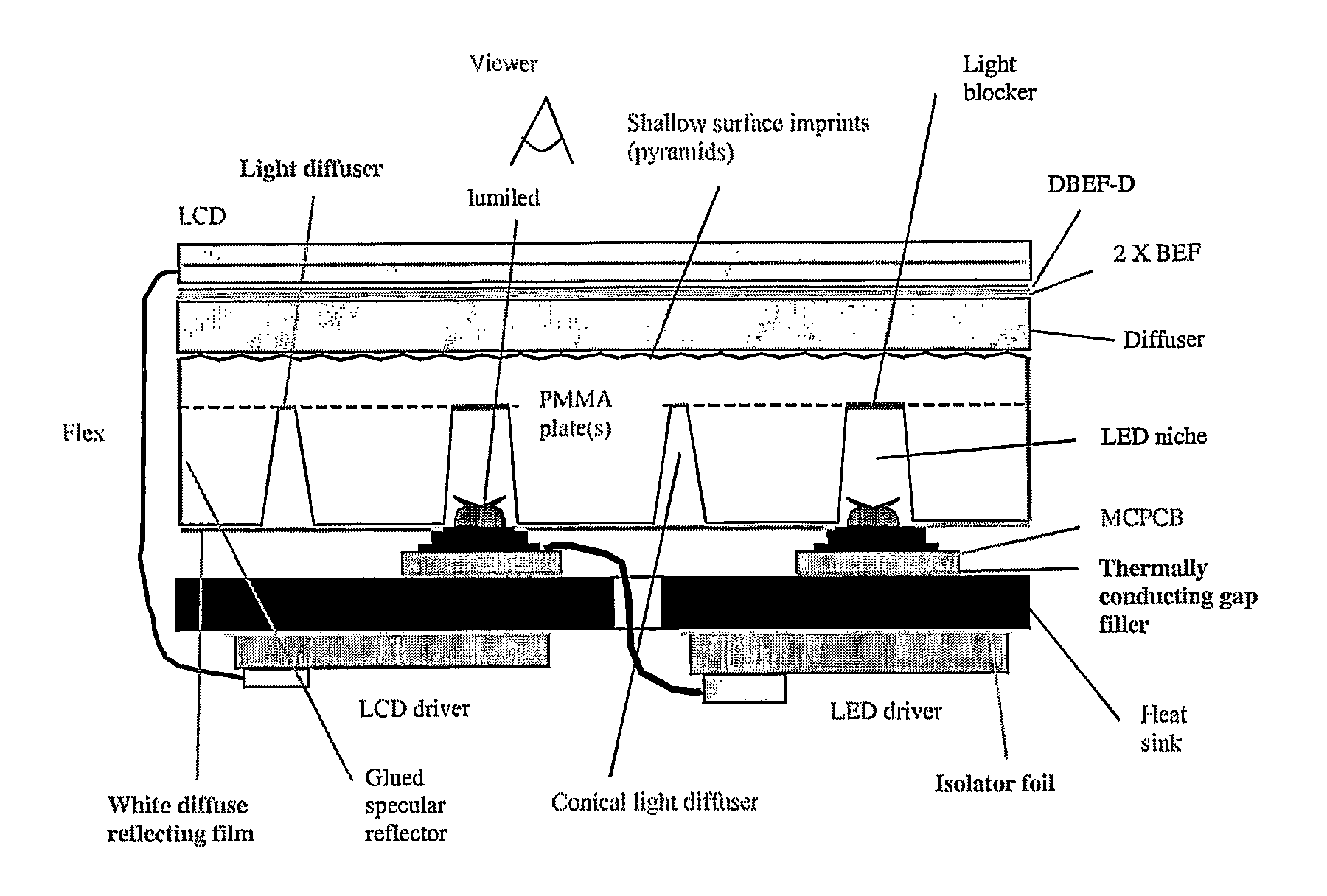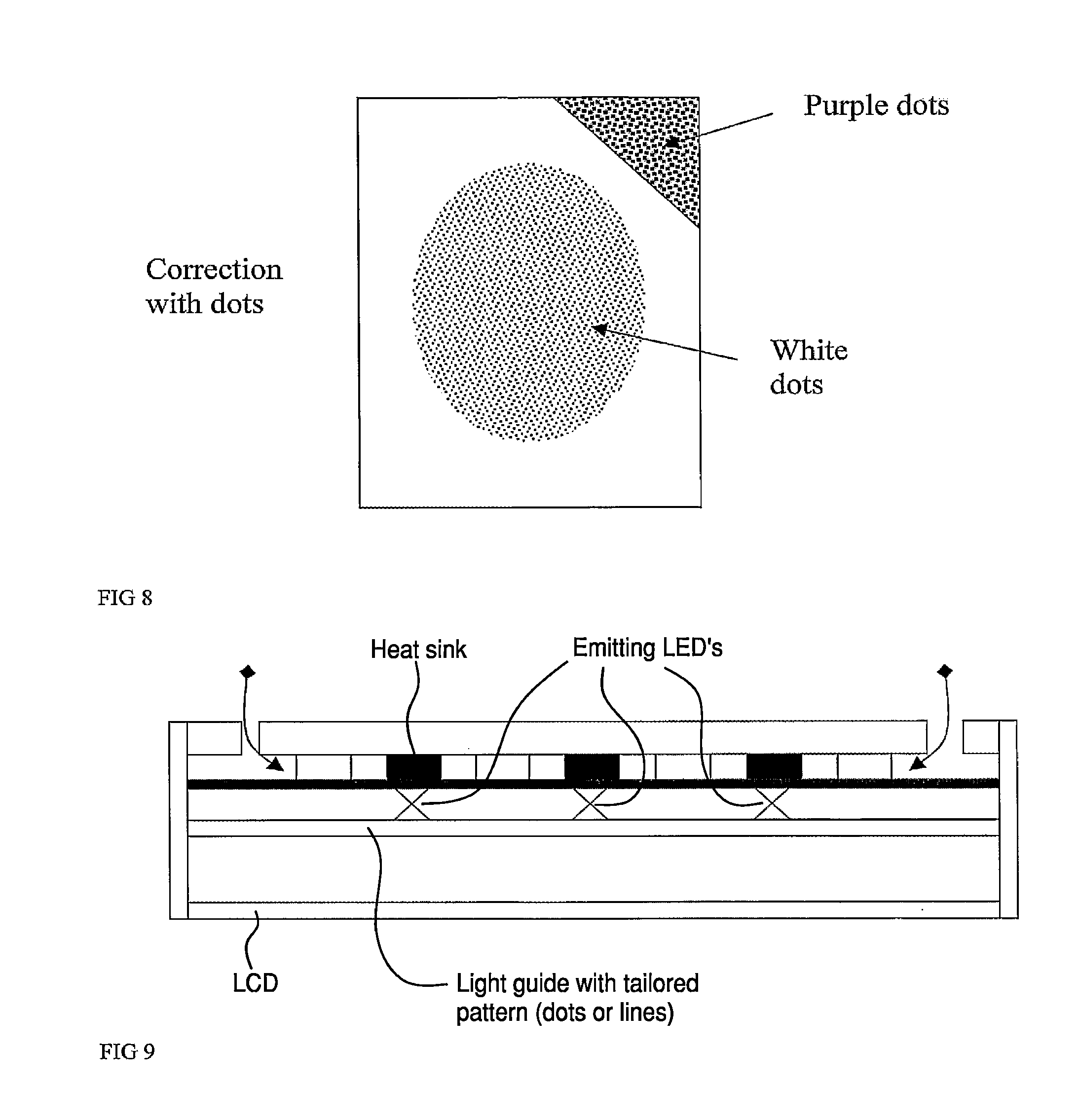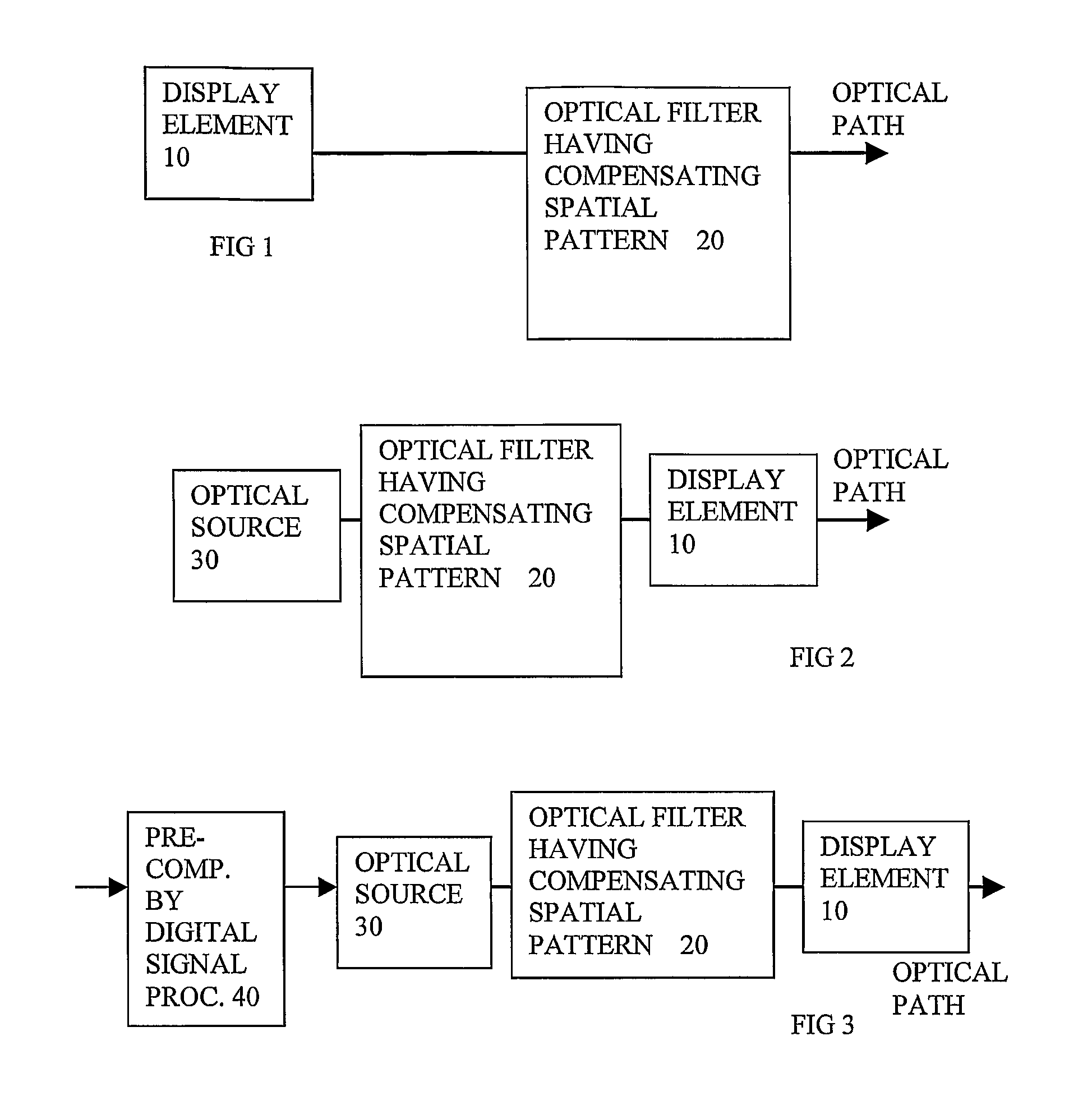Optical correction for high uniformity panel lights
a panel light and optical correction technology, applied in the field of optical correction of high uniformity panel lights, can solve the problems of significant loss of contrast ratio of the display, excessive reduction of gray levels at some pixel, and inability to achieve uniform light output, uniform colour, and the effect of improving uniformity
- Summary
- Abstract
- Description
- Claims
- Application Information
AI Technical Summary
Benefits of technology
Problems solved by technology
Method used
Image
Examples
Embodiment Construction
[0050]The present invention will be described with respect to particular embodiments and with reference to certain drawings but the invention is not limited thereto but only by the claims. The drawings described are only schematic and are non-limiting. In the drawings, the size of some of the elements may be exaggerated and not drawn on scale for illustrative purposes. Where the term “comprising” is used in the present description and claims, it does not exclude other elements or steps.
[0051]FIGS. 1-3, schematic views of embodiments of the invention:
[0052]FIG. 1 shows a schematic view of an embodiment of a display having a light source 30, coupled to a spatial light modulator 10 and an optical filter having a compensating spatial pattern 20. The spatial light modulator can be a reflective (e.g. DMD), a transmissive (e.g. LCD) or an emissive modulator (e.g. LED or OLED display). The spatial light modulator and optionally the light source as well, have a non uniform spatial optical ch...
PUM
 Login to View More
Login to View More Abstract
Description
Claims
Application Information
 Login to View More
Login to View More - R&D
- Intellectual Property
- Life Sciences
- Materials
- Tech Scout
- Unparalleled Data Quality
- Higher Quality Content
- 60% Fewer Hallucinations
Browse by: Latest US Patents, China's latest patents, Technical Efficacy Thesaurus, Application Domain, Technology Topic, Popular Technical Reports.
© 2025 PatSnap. All rights reserved.Legal|Privacy policy|Modern Slavery Act Transparency Statement|Sitemap|About US| Contact US: help@patsnap.com



